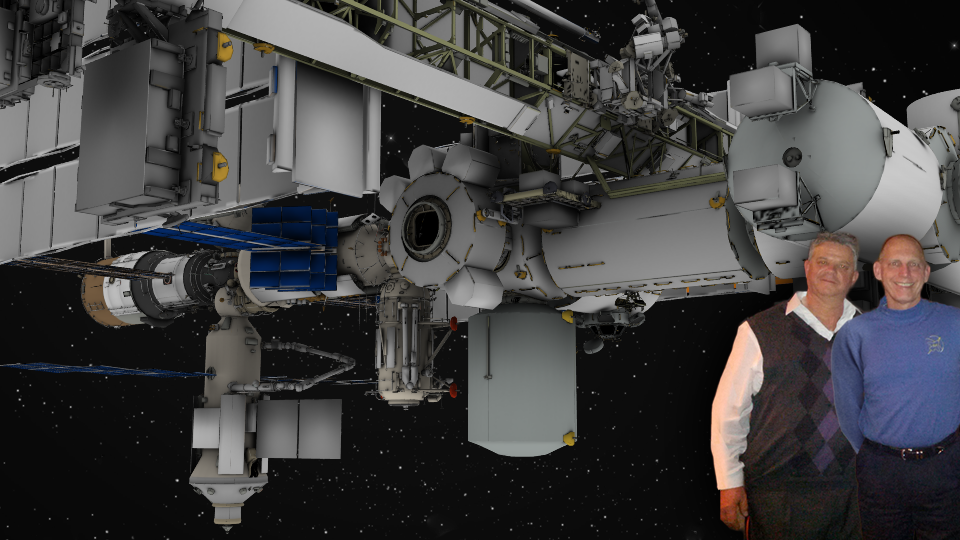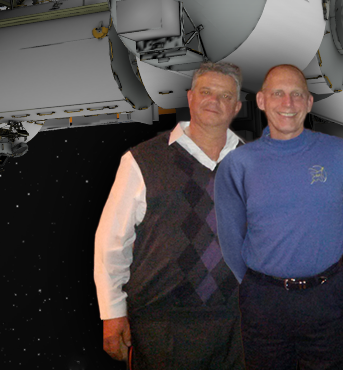Last year, Iowa State’s Virtual Reality Applications Center launched a virtual simulation of the International Space Station (ISS) and its use in testing how humans make decisions in stressful situations.
The research team has since developed an exterior ISS simulator used to explore activities done outside a spacecraft, such as spacewalks, and recently released a video to provide an in-depth look at the innovative research space (see video to the right).
In the Q&A session below, Nir Keren, associate professor of agricultural and biosystems engineering, and Clayton Anderson, a distinguished faculty fellow in aerospace engineering and retired U.S. astronaut who spent 167 days in space aboard the International Space Station, offered insights on the unique simulator that can train students and faculty to think more like an astronaut.
What are some of the best attributes of the simulator?
[CA] This technology is an opportunity for undergrads to step into the world of virtual reality in an authentic space station scenario. Measuring students’ performance, decision making, and stress levels while they battle emergencies in a 3D space station world offers new ways to analyze training methods and results.
[NK] The modularity of the simulator provides opportunities for research, and the simulator introduces scenarios inside and outside of the station. It also offers people a chance to experience some aspects of space operation, such as observing at full scale how items behave in a microgravity environment as well as feeling the enormity of the universe that only Clayton and the very few others have had the opportunity to experience during EVAs (extravehicular activities).

Why is this technology important to offer to students at Iowa State?
[CA] Through our innovative Spaceflight Operations Workshop, these students are learning in an environment that includes skydiving, scuba diving, aircraft flight simulation, virtual reality and survival training. We hope this unique educational experience helps ISU graduates stand apart from other engineering graduates as they compete for jobs in the post-degree environment.
[NK] Students can also get a sense of how to think in the same terms of astronauts, which will be important for those who might go into a space-related industry. On the bigger scale, it gives students the chance to put themselves in someone else’s shoes, and that perspective is something that’s useful for any career.
Where do you see the simulator headed in the future?
[CA] It is possible to adapt these spaceflight operations concepts to many of the ISU colleges. While engineering may leap to the fore, it would be a wonderful way to expose future teachers to yet another alternative that can capture the imaginations of students, pushing both educators and students to think in a different way… more operationally.
[NK] We have already tested firefighters’ decision-making skills with the simulator and created a scene for soldiers who serve in the Middle East as well as an active shooter scene for law enforcement. Essentially, any mission-critical industries could benefit – air controllers, law enforcement officers, emergency responders – as well as manufacturing industries and healthcare. One element the simulator introduces that we did not intend to create is the ability to observe people behaving in their working environment, which could make it a great tool from a human resources perspective.
How could this simulation change the aerospace/safety industry?
[CA] Many industries can enhance employee understanding and performance through the use of virtual reality. The environment provides a safe, quick-turnaround simulation opportunity that can monitor decision making, procedural focus, and training opportunities within a multitude of programmable environments (e.g., inside ISS, outside ISS, military exercises, firefighting inside homes, etc.).
[NK] One unique aspect of the simulator is its ability to capture users’ physiological parameters in real time. We are working on developing a system that can adapt the level of the challenge the simulator introduces based on the user’s skill level. This can help users get comfortable with these high-stress situations and enhance their response over time.
As Iowa State University continues to make enhancements to the simulator’s capability, researchers look forward to continuing to bridge academic and corporate borders through “out-of-this-world” collaborations. Through focused partnerships, these efforts will lead to resounding discoveries helping humankind delve deeper into the universe.
